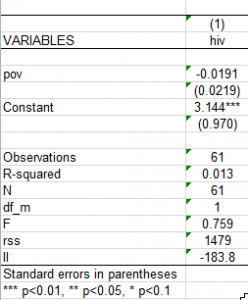Professor Catherine Boone of the Department of Government at UT-Austin spoke to an audience of graduate students and professors from Sociology, Government and other disciplines recently about her latest research on territorial politics and rural property regimes in contemporary Africa. The talk, which took place on Friday, October 21st 2011, was the latest event organized by Power, History, and Society (PHS), a faculty-student network at UT, founded by graduate students and faculty in the Department of Sociology and led by Professor Maya Charrad. Sociology graduate student Christine Wheatley served as discussant, responding briefly to Professor Boone’s talk and setting the stage for the Q & A that followed. Other graduate student members of the PHS network assisted in organizing the talk, including Nicolette Manglos, Nicholas Reith, and Julie Beicken.
Professor Boone began her talk by giving a brief overview of the history of political science and political sociology scholarship on Africa. Since structuralism’s apex in the 1970s and 1980s its influence within research on politics has declined. This, coupled with the complexities of African societies, led many to conclude that there was little “structure” to be found on the African continent characterized by fictive “free peasants.” In this context, where over 70 percentof Sub-Saharan Africans still live in rural areas, our scholarly understanding of rural social structures and agrarian-state relations is still woefully incomplete. Those most aware of the complexities and intricacies of African societies have been anthropologists, who are often anathema to structuralist approaches. Others have continued to spin behaviorist, voluntarist, culturalist and neo-patrimonial theories of African politics.
Thus, in her latest book project, Professor Boone attempts to make a structuralist and institutionalist argument about the ways that certain land tenure regimes, which govern access to land and vary across national and sub-national spaces, can have stark political effects on the scale and scope of political conflicts. She proposes a typology of land tenure regimes that consists of three distinctive forms: familial land holding, local and regional chieftaincies, and statist regimes, where direct agents of the central state control land allocation. These variations in land tenure regimes, she argues, produce two important and related political effects. First, they influence the scale and scope of redistributive conflicts around land. For example, if land allocation is controlled by family/lineage, then disenfranchised persons must limit their grievances to the family. Second, they produce geographic unevenness in local possibilities for national citizenship, political voice in the national arena, and liberal democratic representation at the national level. Thus, if conflicts are limited in scale and scope beneath the national level, so is political participation of citizens involved in the conflict at the national level.
This comparative and structuralist argument is timely and has broad implications beyond explaining current political conflicts in Africa. In the context of globalization and the neo-liberal pressure for the state to retreat from arenas it once controlled, it sheds light on the various effects of decentralization, helping us to compare and contrast its political, social, and economic costs and benefits. It also shows how less centralized rural property regimes– whether at the level of extended family/lineage or chieftaincies, while problematic in several ways, seem to serve as the last line of defense against the looming threat of land dispossession by the global market. As land values rise and there is increased pressure from international buyers, a centralized state system of land tenure may make the market so “efficient” as to make it even easier to drive current inhabitants off of the land that they have long occupied. It also broadens the potential for wider, national level conflicts.
Sociology Professors Alex Weinreb and Nestor Rodriguez as well as a number of graduate students from the Departments of Sociology and Government and other departments engaged Boone in a spirited discussion and debate inspired by her research. The discussion revolved around comparative methodology, as well as the question of critical historical antecedents, in particular, the question of how far back in history it is necessary to engage in order to make an argument of structural causation. Other lucid comments focused on comparisons between pre-capitalist Europe and Africa, which clearly differ in numerous ways, yet lend themselves to structuralist arguments of different types because of similar historical processes of land enclosure and dispossession.
Both the Power, History and Society Network and the Department of Sociology would like to thank Professor Boone for her excellent and engaging talk. And we look forward to future cross-departmental exchanges and PHS events with others.




